COPYRIGHT, PLEASE NOTE
All the material on this website is copyrighted to J-P Metsavainio, if not otherwise stated. Any content on this website may not be reproduced without the author’s permission.
BUY A MUSEUM QUALITY POSTER
BUY A POSTER:https://astroanarchy.zenfolio.com/
Wednesday, November 5, 2008
Cygnus Trio in Stereo pair
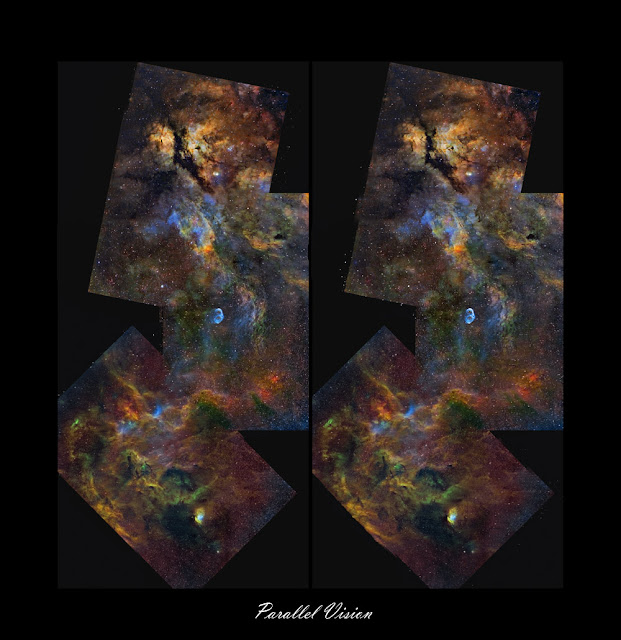
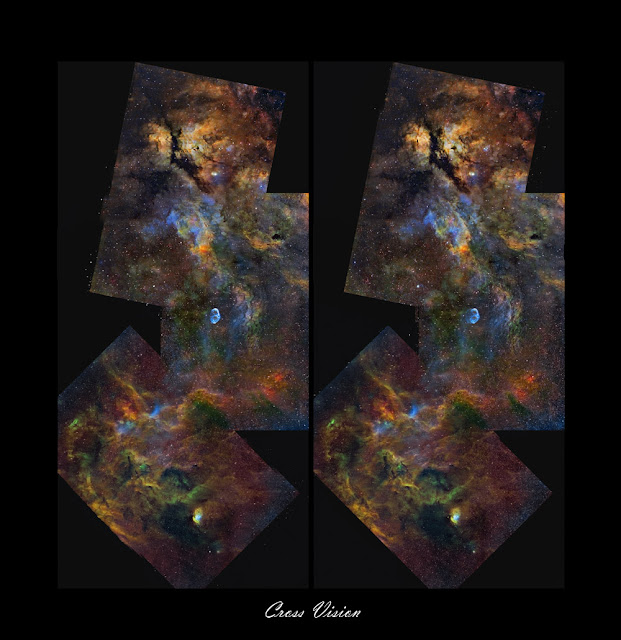
Again, this is not a accurate precentation of actual 3D data.
This is more like a "educated guess"
I made this one to show the actual nature of this target.
The gas and stars are floating in three dimensional space forming three dimensional forms,
rather than being a 2D painting on the canvas.
-
As usual, there is two versions. One for parallel vision, and the other one for cross vision methods. Thats because some part of the viewers can see one of the method in 3D, but not the other. (I can't see cross vision images
-
How to see this in 3D?
Please, look for the right hand side menu for instructions.
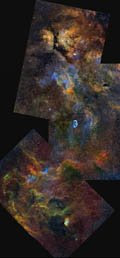 Klick this image, if you can't see either of the stereo methods above.
Klick this image, if you can't see either of the stereo methods above.
This is a animated image showing steroimage as a small animation.
It will gives an idea, what can be seen in stereo images.
Labels:
stereo images
Tuesday, November 4, 2008
The Cygnus Trio, a long project
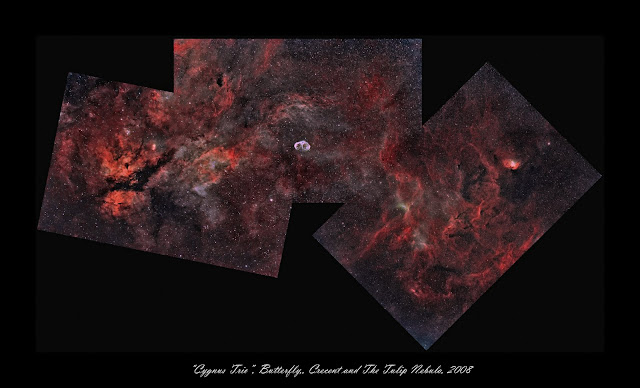
"Natural colors" 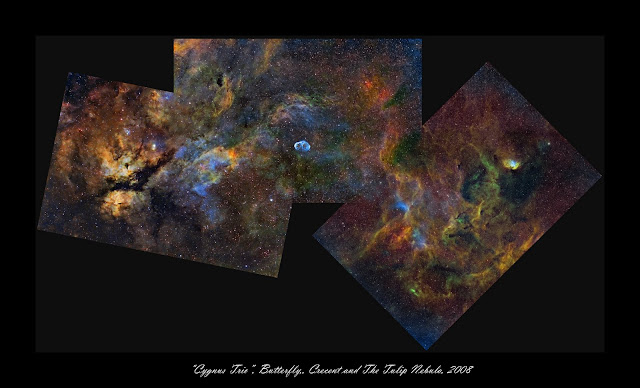 Hubble palette colors -
Hubble palette colors -
 Hubble palette colors -
Hubble palette colors -
The "Cygnus Trio", as I call a chain of objects in constellation Cygnus,
Butterfly nebula, Crescent nebula and finally the Tulip nebula are
located in Milkyway's dense star and gas field.
-
Image here is a mosaic from narrowband images, taken between 29.09-03.11. 2008.
Imaging information can be found in each images original posts.
(look at the right hand side menu, nebula)
The image spans area of 9 x 5 degrees.
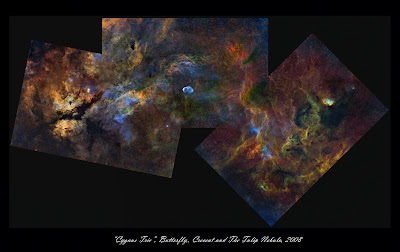 Here is a starless version to show the most complex nebulosity better.
Here is a starless version to show the most complex nebulosity better.The Tulip Nebula
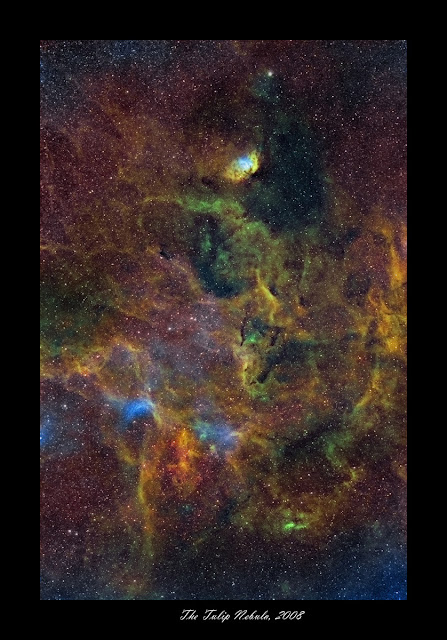
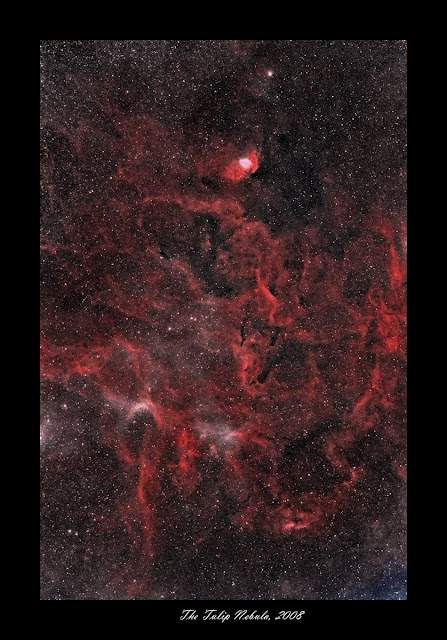
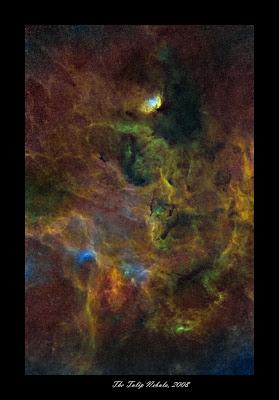
Last image for my Cygnus project is the Tulip nebula.
Image is a narrowband color image in different versions.
There is three version of this image here, first image is Hubble palette composition. S-II =RED, H-alpha = GREEN and O-III = BLUE
Second version is a "natural" color composition from narrowband channels, H-alpha 100% + 35%S-II = RED, O-III = GREEN and O-III 100% + 30%H-alpha = BLUE.
The third version is with suopressed stars to show the complex shapes of the nebula.
-
Imaging data:
Camera, QHY8 - Filters, Baader 7nm H-alpha, Baader 8,5nm O-III and Baader 8nm S-II - Optics, Tokina AT-X 300mm @ f2.8 -
Exposures, 7X 1200s H-alpha, 1 X 1200 O-III and 1X1200s S-II + flats and bias -
Guiding, LX200 GPS 12" + PHD-guiding and Lodestar
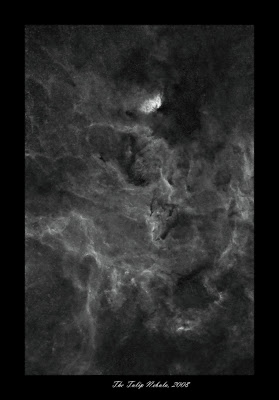
This image is a starless BW version.
It shows a three dimensional nature of this object very well, I think.
Editors' Choice

My Butterfly Nebula image was selected as an "Editors' Choice"
by Sky&Telescope magazine.

Subscribe to:
Comments (Atom)








